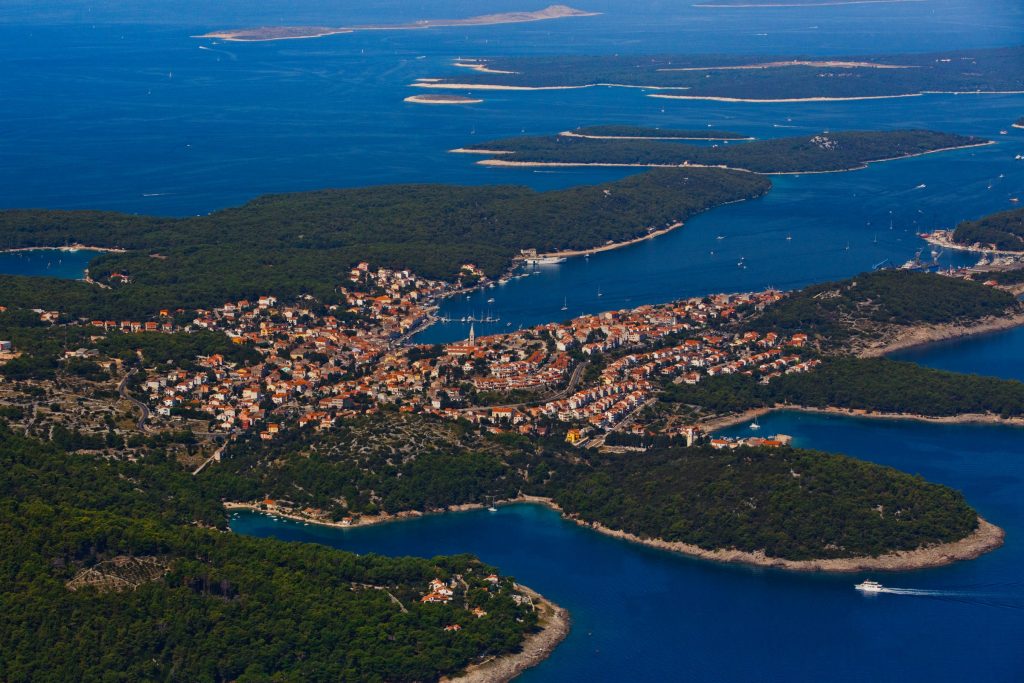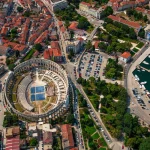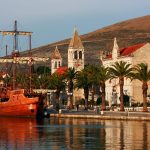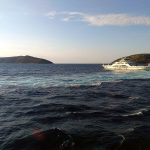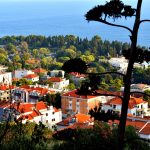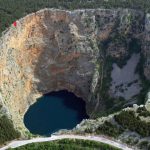In our last feature on travel journals documenting trips to the Adriatic, we left off in southern Dalmatia. And now, where our travellers would depart for Montenegro, we’ll circle back to the Northern Adriatic instead. This time, we’re tagging along with A. Fortis (1770s) and G. Marcotti (1890s) – see Part I and Part II for more info and some impressions of Istria and Dalmatia.
Why go back? A good few places were left out of both previous pieces for the sake of brevity, so we’re making this a trilogy to see what our protagonists thought about the Kvarner gulf. It’s a detour alright, but in the words of Fortis who expressed a similar sentiment in one of his letters:
It is a massive geographical leap to move from the island of Brač straight to the island of Rab which is one hundred and twenty miles away. But what can I tell you?
Exactly. But before we get to Rab and other Kvarner islands, let’s make a stop in Senj. It’s a coastal town best known for the magnificent Nehaj fortress, a historic stronghold of Uskoks who kept invaders at bay. Fortis says:
A very famous city in the history of the Venetian Republic which had to formally wage a war against it and, being unable to conquer it for a long time, suffered heavy losses in its possessions in Istria and Dalmatia; it was a subject of interest for a Venetian traveller. I wanted to meet the descendants of those fierce Uskoks who were admired for their courage and hated for their cruelty.
I wish I could learn their history as penned by one of them, but Uskoks fought heroically and dealt in ransom and loot collection, and did not write historical accounts.
You don’t say.
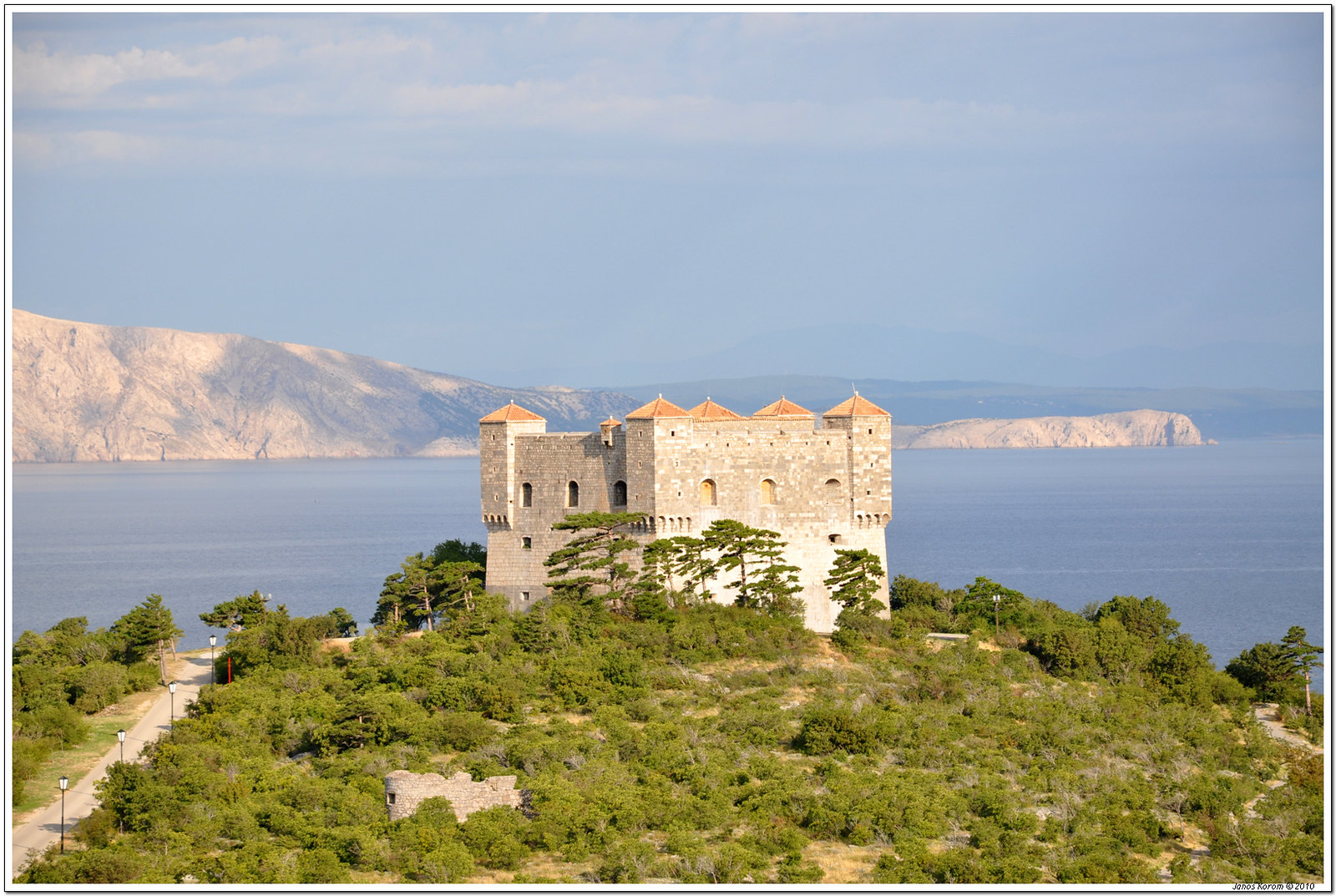 Nehaj fortress / János Korom / Flickr
Nehaj fortress / János Korom / Flickr
With Senj ruled by Austria at the time, the Uskoks truly were a source of headache for Venice; they defended the city, but also plundered Venetian galleys along with most other commercial ships in the area. Their conquests had a blessing of the local clergy, monasteries received a tithe from the bounty, and so the 16th-century Senj essentially thrived on piracy and looting. It’s not a surprise then that its population might’ve seemed a bit, uh, laid-back to an outsider:
The people of Senj are superstitious and debauched at the same time. The women of this city are said to be prone to love affairs; they are easy-going and in this regard do not bear a resemblance to Croatian women.
Uh-oh. Shall we proceed with caution? Luckily, instead of lamenting loose morals, Fortis turns this into social commentary:
And so romantic adventures are frequent, and sometimes followed by unpleasant consequences. The bishop and the monastery heads who make up the court that deals with these matters issued a decree a few years ago, stipulating that if an unmarried woman were to give birth to a child, she could not sue her lover in court for marriage or possessions. This cruel ordinance led to an even greater decline of morals, and every year, many unfortunate girls are sacrificed to disgrace for which there is no cure; it is heartless and outrageous barbarism.
A progressive stance for the 1770s.
To finish, a few of his thoughts on the infamous Senj bura:
The wind coming from the barren mountains blows so fiercely in that narrow gap, there are times in winter when one cannot leave the house without peril, and it is even worse outside the city. Even when they do not walk across the square where no sensible person would appear at such times, but through the narrow winding alleys, it often happens that children and frail folk are lifted from the ground and slammed against the wall by the wind. When an urgent need compels someone to go to the docks where ships are anchored, despite crawling on their hands and knees they sometimes roll away like a straw because of the force of the wind.
Senj bura hasn’t lost any of its force to this day, and Fortis was wise not to take it lightly.
***
Now, to Rab. Those who read the first part of this series might recall his unabashed trashing of the poor populace of Pag island, and it would appear that Fortis really held a grudge against island folk in general:
The island of Rab would have everything needed to support its small population, if only its agriculture was in the hands of less stupid and lazy people.
He continues:
Nevertheless, [the island] produces firewood, shipped off to Venice on the backs of numerous donkeys each year, as well as grain, oil, excellent wine, brandy, and since the ancient times – silk, the silkworms feeding on black mulberry leaves. Exported are also leather, wool, sheep, pigs and horses of good breed.
I don’t know, they don’t sound that lazy to me. There’s more:
The sea is beginning to be of use, with salt pans maintained on the island that give an abundance of good fine salt. In addition, in spite of fishing being carried out here in a very poor and sloppy manner, the catch of tuna, mackerel and sardines is an important item in the trade of the people of Rab who (as the rest of Dalmatia) prefer to sell their goods to foreigners rather than Venetians. Despite all these natural products, the island is far from being rich or achieving adequate progress, as uncultivated land and idle peasants are too commonly seen.
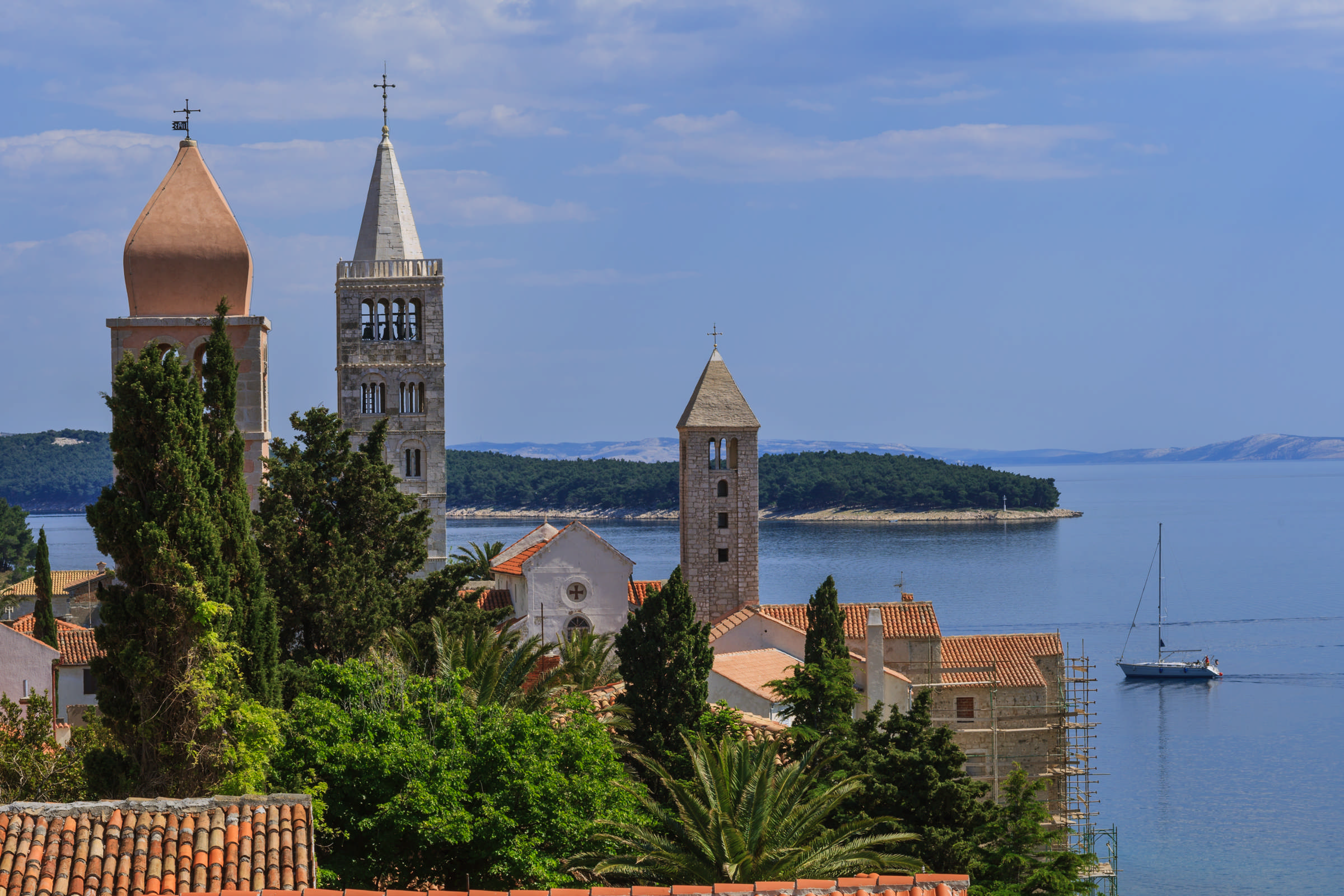 Rab town by Romulic and Stojcic
Rab town by Romulic and Stojcic
And an anecdote:
In the past, there was a bishop of Rab named Ottavio Spaderi; it occurred to him not to allow on the feast of St. Christopher for his relics to be displayed for public veneration, seeing as he doubted their authenticity. The folk rebelled, wanting to throw him into the sea from the top of the hill on which the cathedral stands, and the riots did not subside even after the moment had passed. The government had to send a warship to save the prelate from peril, and the pope considered it his duty to grant him a more submissive congregation in Italy.
Feisty. Fortis is lucky he wasn’t thrown from a cliff as well.
***
Later on, Marcotti writes about what you can find on Lošinj island:
A hunters’ association, a branch of the tourist club, a company for afforestation and landscaping. (…) There is no shortage of foreigners: Mali Lošinj has the Vindobona hotel, three special trattorias, five boarding houses. There are two other guesthouses and a resort for convalescent children in Veli Lošinj.
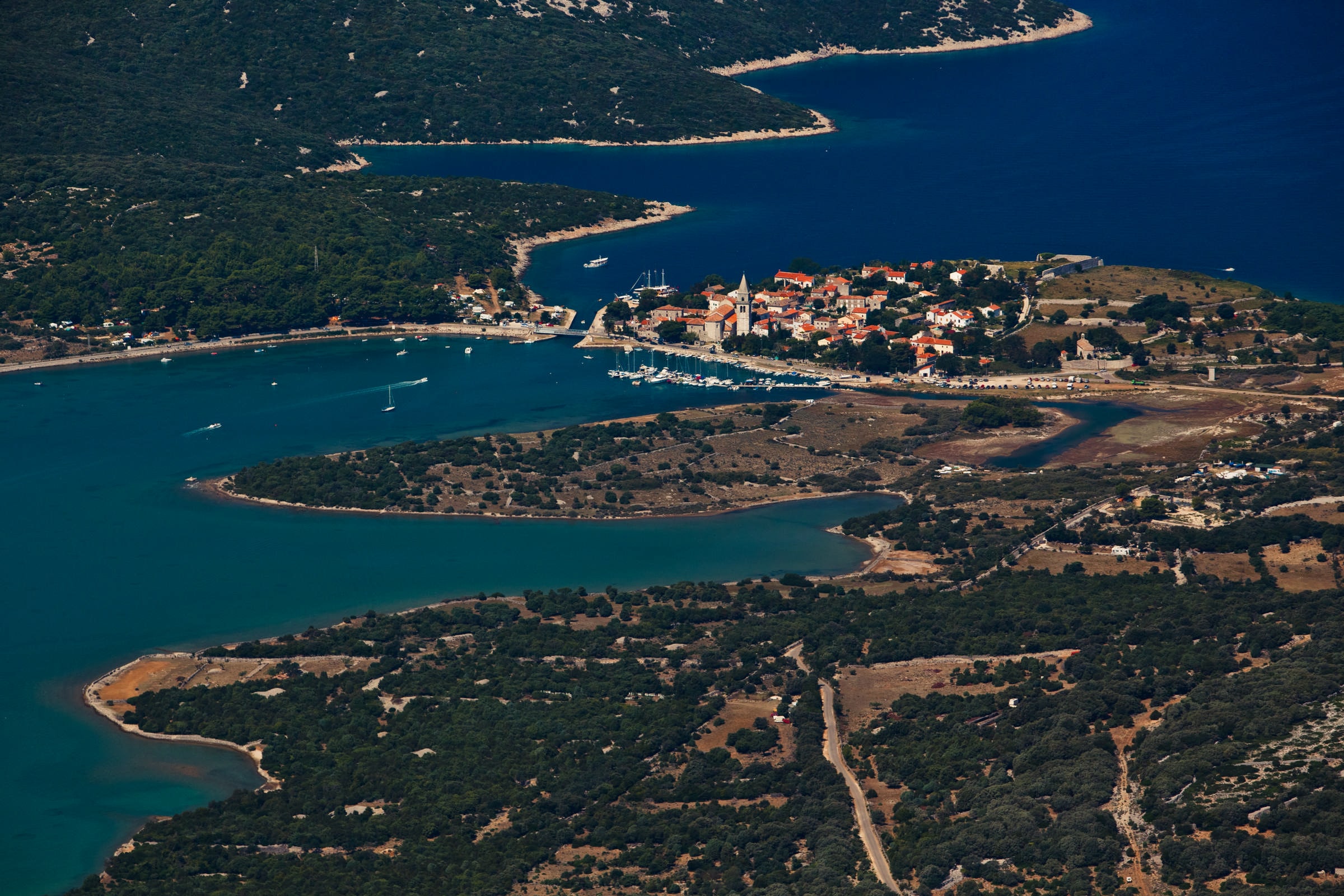 Osor town on Cres island by Romulic and Stojcic
Osor town on Cres island by Romulic and Stojcic
Visiting Cres island, he notes:
Generally speaking, sheep herding is difficult on islands of Kvarner due to bura; large juniper trees, grown and naturally shaped into canopies by the frequent pressure of the wind, provide shelter to roaming flocks.
***
On to Rijeka, the biggest town in the Kvarner gulf, visited by both our travellers. Fortis first:
Croatian is the native language. Refined folk of both sexes speak good Italian, imitating the Tuscan manner of speaking; surely they should be praised much more than us who butcher our beautiful language but mock everyone else who endeavours to speak it unless they are born in Tuscany.
The people of Rijeka are mild-mannered, and their company jovial, though marked by moderation.
Marcotti also spends some time in Rijeka and doesn’t let us down. Two of the most important things in any destination: where to eat and how to get around!
Numerous trattorias as well as those operating as part of hotels; breweries of the leading Austrian factories. Scampi are delicious, especially served in risotto. [There are] car services, omnibuses, public valets.
…that last one being a somewhat loose translation, referring to a particular profession: a person stationed in a public place ready to help you with any given need or errand. Think a concierge, a tourist guide, a messenger, a personal shopper, a delivery service, all rolled into one. Looking for directions to a certain place or perhaps need a hand with those shopping bags? The public valet’s got your back.
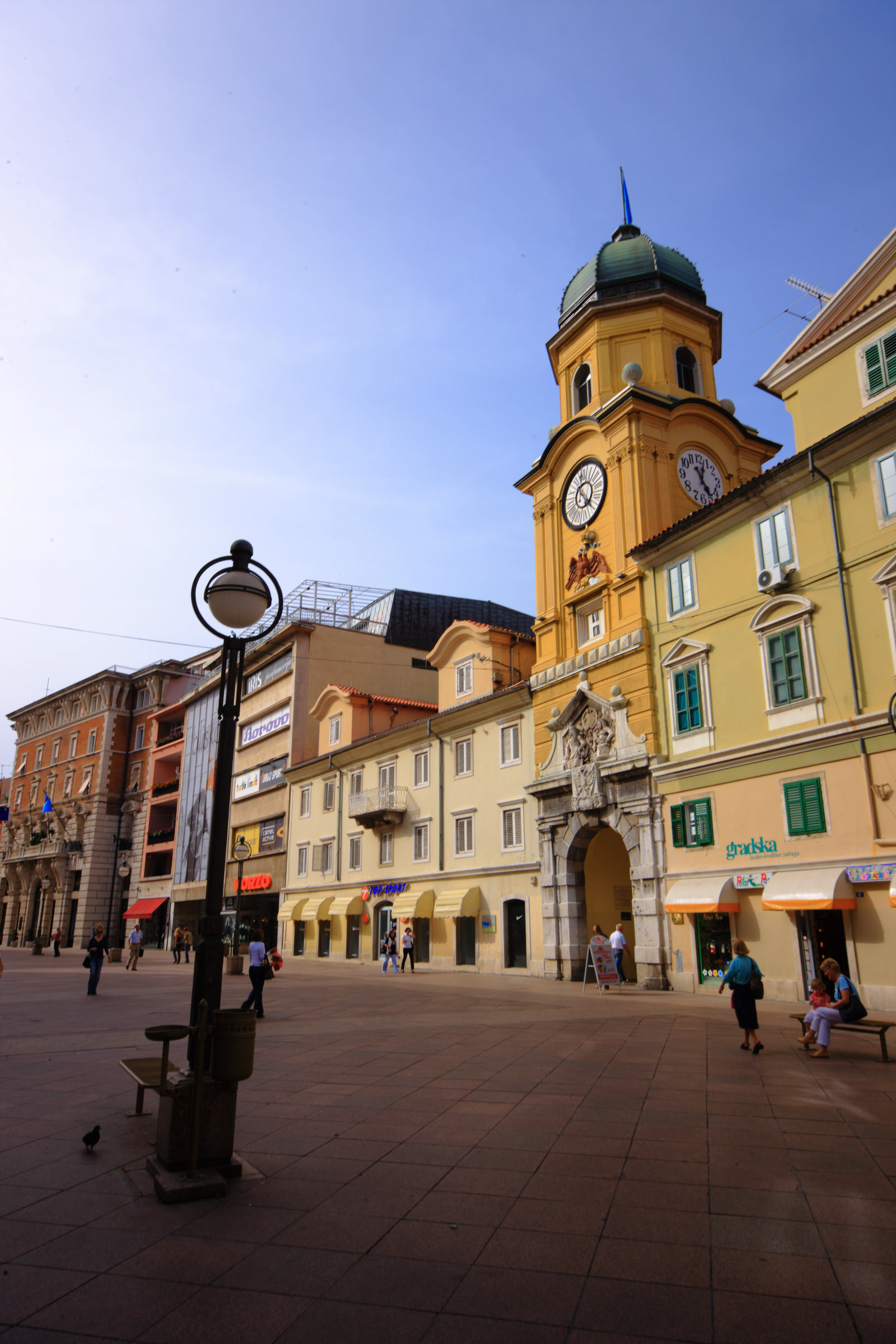 Rijeka by Romulic and Stojcic
Rijeka by Romulic and Stojcic
He goes on:
The look of the city is really nice, its architecture Italian in character, though it offers little of note when it comes to art.
Ah well, you win some, you lose some. At least there are good scampi.
And for a final thought, a line used time and time again, a variation of which is probably currently displayed somewhere on the pages of the local tourist board:
The panoramic view of Rijeka and the Kvarner gulf as seen from Trsat is truly magnificent.
***
Opatija has grown into a fully fledged tourist destination by this point (late 1890s), and a health resort at that. Marcotti reports:
There’s a good number of nonagenarians in perfect health living on this riviera.
Its most sheltered and most pleasant place, Opatija, is advertised by the Südbahn company (Southern Austrian railways) as a health resort for the winter and sea-bathing in the summer. It has developed formidably and can barely accommodate the large clientele that flocks to it, particularly those from Austria-Hungary and Germany.
The entire facility cost the Südbahn no less than 3 million florins. There are milk, honey and egg treatments, massage, gymnastics, and walks for health.
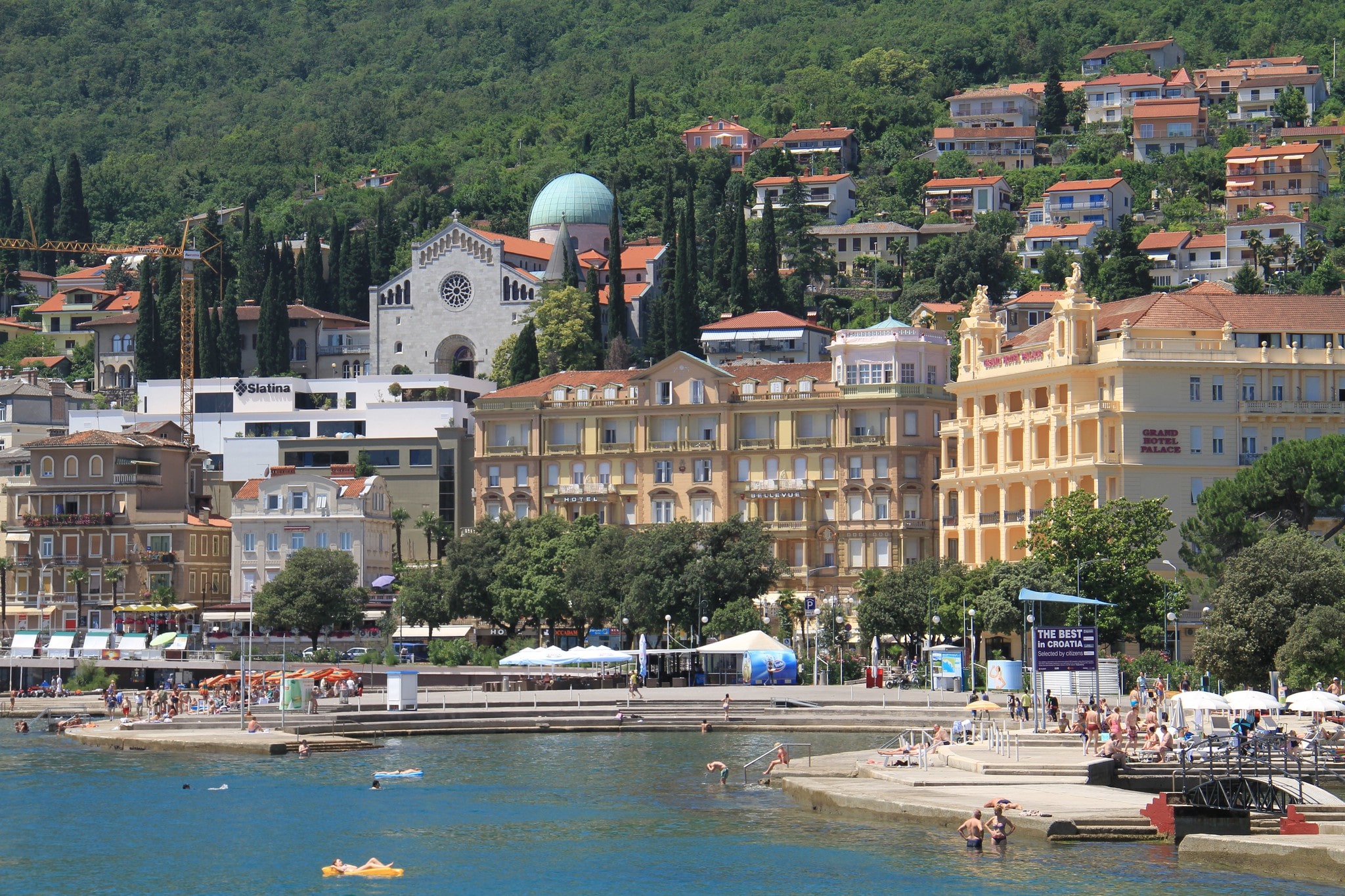 Opatija by Ronnie Macdonald / Flickr
Opatija by Ronnie Macdonald / Flickr
Some interesting insight into the early days of wellness, followed by a short recap showing just how quickly Opatija gained a reputation as a place to be:
Starting from 1885 (when Archduke Rudolf and his wife Stéfanie stayed here for the first time) visiting and staying in Opatija has become a pastime of high regard, very fashionable in court circles and among aristocrats and diplomats. This is from the 15th of October to the 15th of May: in the other five months, the bourgeois society visits for sea bathing. Empress of Austria, many archdukes and archduchesses, the royals of Serbia and Romania were some of Opatija’s guests.
***
With tourism becoming an industry, this seems like a good place to end this feature. Admittedly, when it comes to travel journals that paint a picture of the Croatian coast in earlier times, we’ve barely scratched the surface in our three-part series. Countless travellers have chronicled their Adriatic adventures, and providing you have time and the resolve to peruse old texts, it’s a fascinating body of work to study. We kept the scope small not to turn this into a dissertation, but hope you’ve enjoyed our travellers’ reviews anyway. Just keep in mind these are opinions of individuals from centuries past, and not neccessarily an actual representation of what Croatia is like – lazy folk, loose morals and local superstitions included.
Sources for Part III:
Giuseppe Marcotti, L’Adriatico Orientale, da Venezia a Corfu (1899)
Alberto Fortis, Viaggio a Dalmazia, 1774 (Croatian edition: Put po Dalmaciji, Globus, Zagreb, 1984)

